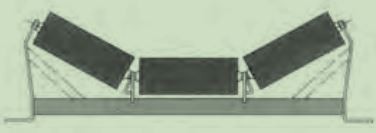 Afrikaans
Afrikaans  Albanian
Albanian  Amharic
Amharic  Arabic
Arabic  Armenian
Armenian  Azerbaijani
Azerbaijani  Basque
Basque  Belarusian
Belarusian  Bengali
Bengali  Bosnian
Bosnian  Bulgarian
Bulgarian  Catalan
Catalan  Cebuano
Cebuano  Corsican
Corsican  Croatian
Croatian  Czech
Czech  Danish
Danish  Dutch
Dutch  English
English  Esperanto
Esperanto  Estonian
Estonian  Finnish
Finnish  French
French  Frisian
Frisian  Galician
Galician  Georgian
Georgian  German
German  Greek
Greek  Gujarati
Gujarati  Haitian Creole
Haitian Creole  hausa
hausa  hawaiian
hawaiian  Hebrew
Hebrew  Hindi
Hindi  Miao
Miao  Hungarian
Hungarian  Icelandic
Icelandic  igbo
igbo  Indonesian
Indonesian  irish
irish  Italian
Italian  Japanese
Japanese  Javanese
Javanese  Kannada
Kannada  kazakh
kazakh  Khmer
Khmer  Rwandese
Rwandese  Korean
Korean  Kurdish
Kurdish  Kyrgyz
Kyrgyz  Lao
Lao  Latin
Latin  Latvian
Latvian  Lithuanian
Lithuanian  Luxembourgish
Luxembourgish  Macedonian
Macedonian  Malgashi
Malgashi  Malay
Malay  Malayalam
Malayalam  Maltese
Maltese  Maori
Maori  Marathi
Marathi  Mongolian
Mongolian  Myanmar
Myanmar  Nepali
Nepali  Norwegian
Norwegian  Norwegian
Norwegian  Occitan
Occitan  Pashto
Pashto  Persian
Persian  Polish
Polish  Portuguese
Portuguese  Punjabi
Punjabi  Romanian
Romanian  Russian
Russian  Samoan
Samoan  Scottish Gaelic
Scottish Gaelic  Serbian
Serbian  Sesotho
Sesotho  Shona
Shona  Sindhi
Sindhi  Sinhala
Sinhala  Slovak
Slovak  Slovenian
Slovenian  Somali
Somali  Spanish
Spanish  Sundanese
Sundanese  Swahili
Swahili  Swedish
Swedish  Tagalog
Tagalog  Tajik
Tajik  Tamil
Tamil  Tatar
Tatar  Telugu
Telugu  Thai
Thai  Turkish
Turkish  Turkmen
Turkmen  Ukrainian
Ukrainian  Urdu
Urdu  Uighur
Uighur  Uzbek
Uzbek  Vietnamese
Vietnamese  Welsh
Welsh  Bantu
Bantu  Yiddish
Yiddish  Yoruba
Yoruba  Zulu
Zulu conveyor bend pulley
The Role of Conveyor Bend Pulleys in Industrial Operations
In the modern industrial landscape, efficiency and reliability are paramount, especially in bulk material handling. One key component that significantly contributes to the smooth operation of conveyor systems is the bend pulley. Conveyors are widely used in various sectors, including mining, manufacturing, and logistics, primarily for their ability to transport large volumes of materials over considerable distances. Bend pulleys play a crucial role in enhancing the performance and longevity of these conveyor systems.
What is a Bend Pulley?
A bend pulley is a type of pulley used in conveyor systems to change the direction of the belt. Positioned at a certain angle, the bend pulley ensures that the belt maintains optimal tension and reduces the risk of sagging. These pulleys are typically located at the load and return sides of the conveyor. Depending on the design, a bend pulley can be a single or double pulley set up, allowing for different angles of belt deviation.
Importance of Bend Pulleys
1. Belt Orientation and Alignment One of the primary roles of a bend pulley is to guide the belt in the desired direction. Proper alignment is essential as it minimizes wear and tear on the belt, ensuring a longer service life. Misalignment can lead to uneven wear, which might ultimately cause the belt to fail.
2. Tension Control Maintaining adequate tension in the conveyor belt is crucial for its effective operation. Bend pulleys contribute to this tension by providing a point at which the belt can bend and thus remain taut. This tension helps in the effective transfer of materials along the conveyor system.
3. Space Efficiency By allowing the belt to change direction, bend pulleys enable more compact conveyor designs. This is particularly beneficial in environments where space is limited, as it allows for a more flexible layout.
conveyor bend pulley

4. Material Handling Efficiency The efficiency of material handling systems improves significantly with the incorporation of bend pulleys. They allow for contouring around obstacles and navigating tight spaces, ensuring materials can be transported seamlessly from one location to another.
Types of Bend Pulleys
Bend pulleys come in various designs, depending on the specific application and operational requirements. Common types include
- Concave Bend Pulleys These pulleys have a curved surface that helps to maintain a tight grip on the conveyor belt, improving traction and efficiency. - Flat Bend Pulleys These provide a straightforward, flat surface that works well in situations where minimal belt deviation is required.
- Trough Bend Pulleys Designed with a trough shape, these pulleys help keep the load securely in place, reducing spillage and ensuring efficient material transport.
Conclusion
Bend pulleys may seem like a minor component of a conveyor system, but their function is vital in ensuring optimal performance and durability. By helping to maintain proper belt alignment, tension, and space efficiency, they contribute significantly to the reliability of material handling operations. As industries continue to evolve and demand greater efficiency, the role of bend pulleys will undoubtedly increase, making them an essential component in the mechanical ecosystems of modern industry. Understanding their function and application is key to designing effective and efficient conveyor systems that meet today’s operational demands.
-
Trusted Conveyor Solutions from Leading Conveyor Idler Roller ManufacturersNewsJun.27,2025
-
Reliable Return Idler Solutions for Efficient Belt Conveyor SystemsNewsJun.27,2025
-
Precision Conveyor Accessories for Streamlined Material HandlingNewsJun.27,2025
-
High-Quality Belt Conveyor Idler Solutions for Efficient Material HandlingNewsJun.27,2025
-
High-Performance Belt Conveyor Pulleys for Reliable Material HandlingNewsJun.27,2025
-
Enhancing Material Handling EfficiencyNewsJun.27,2025





























